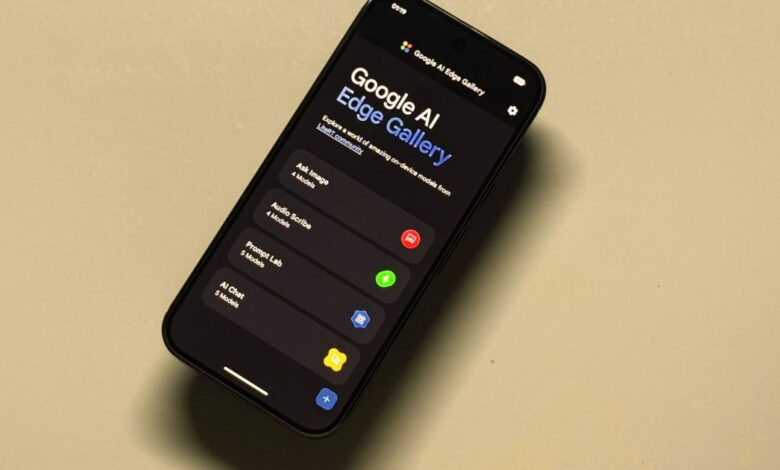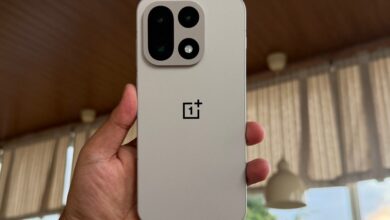Discover Google’s Secret App Showcasing AI’s Potential on Your Phone

The Future of AI on Your Smartphone
When it comes to artificial intelligence on smartphones, the trend is shifting towards on-device processing. This means that many AI tasks can be performed locally,without needing an internet connection. Imagine asking a chatbot to check your grammar, conducting swift research, editing photos, or even getting explanations through your camera—all without relying on the web.
One major advantage of this approach is privacy. your personal details stays on your device instead of being sent to remote servers for processing. Additionally,local models tend to be quicker sence they don’t have to communicate with external systems. However, there’s a trade-off: smaller models may not have all the capabilities of their larger counterparts.
for instance, advanced models like Gemini or ChatGPT can handle text and images and even generate audio and video content. These robust systems require notable processing power from specialized chips and typically need an internet connection for full functionality.But something exciting is happening in this space thanks to Google.
Introducing Google AI Edge Gallery
A few months back, Google launched an app called Google AI Edge Gallery after initially hosting it on GitHub. Now available in the Play Store, this app aims primarily at developers looking to create AI experiences within their applications—but anyone can give it a try without feeling overwhelmed.
You can think of it as a unique marketplace where instead of downloading apps directly, you select various AI models that run right from your phone.If you purchase a new Android device like the Pixel 10 Pro today, its built-in AI features are powered by Gemini technology. While you could download apps such as ChatGPT or Claude separately—requiring internet access—the Edge Gallery allows offline operation.
This app enables users to run different AI models offline for tasks like analyzing images or summarizing lengthy documents—all without needing additional applications installed specifically for those functions.
The Benefits of Offline Functionality
Why would someone want offline capabilities? Consider scenarios where you're out of cellular data or find yourself in areas with poor connectivity—or perhaps you simply prefer not sharing sensitive information online with an external service provider. you might also need specialized AIs designed for specific tasks—like converting PDF files into concise bullet points or generating academic content based solely on provided images.
The Google AI Edge Gallery lets you choose any compatible model from its library and accomplish these tasks efficiently while remaining entirely offline! Currently available options include powerful models developed by Google under the Gemma series that support multimodal functions—meaning they can work with text as well as image and audio inputs—and other notable names like DeepSeek and Meta’s Llama are also accessible through HuggingFace LiteRT Community library integration.
Diving Deeper into Technical Features
The various AIs offered via Google’s platform are optimized using LiteRT—a high-performance runtime designed specifically for mobile devices handling artificial intelligence workloads effectively while remaining open-source friendly toward large language model (LLM) progress efforts!
If you're familiar with tools such as TensorFlow or PyTorch programming frameworks? You’re in luck! You can import compactly sized custom-built AIs stored locally onto your PC after converting them into .litertlm format before transferring them over seamlessly via simple file management techniques!
User Experience Insights
I spent some time experimenting mainly with Gemma 3n due its versatility across multiple functionalities including chat interactions alongside image recognition capabilities plus audio generation too! Users get options regarding whether they want their chosen model running off CPU versus GPU along adjusting sampling rates & temperature settings which influence output diversity levels substantially!
A lower temperature setting yields more predictable responses whereas higher temperatures introduce creativity but may lead errors occasionally depending upon context complexity involved during queries made against these intelligent systems!
I tested around nine different models overall; results varied quite noticeably between them especially when comparing response times—such as I uploaded my cat's photo asking Gemini what breed she was—it took just three seconds compared against eleven seconds taken by Gemma 3n yielding accurate yet brief feedback respectively!
Text summarization proved slower than expected too; submitting lengthy articles resulted delays upwards twenty seconds before receiving bullet-pointed summaries back again although Microsoft Phi-4 mini performed better here delivering faster outputs overall despite lacking Qwen 25's formatting finesse which I found appealing personally speaking!
A Glimpse Ahead: What lies beyond?
This innovative request isn’t universally compatible across all devices though—it requires robust processors equipped either NPU/AI accelerator chips alongside minimum eight gigabytes RAM capacity ideally speaking! My tests conducted using pixel 10 Pro yielded satisfactory performance levels throughout entire experience without overheating issues arising whatsoever during usage periods encountered thus far…
This isn't meant replace existing chatbots reliant upon constant connectivity just yet but rather serves indication promising advancements lie ahead within mobile tech landscape itself moving forward together hand-in-hand towards greater possibilities unlocking potential future developments await us all down road ahead…
And don't forget! NoveByte might earn a little pocket change when you click on our links, helping us keep this delightful journalism rollercoaster free for all! These links don’t sway our editorial judgment so you can trust us. If you’re feeling generous support us here.





